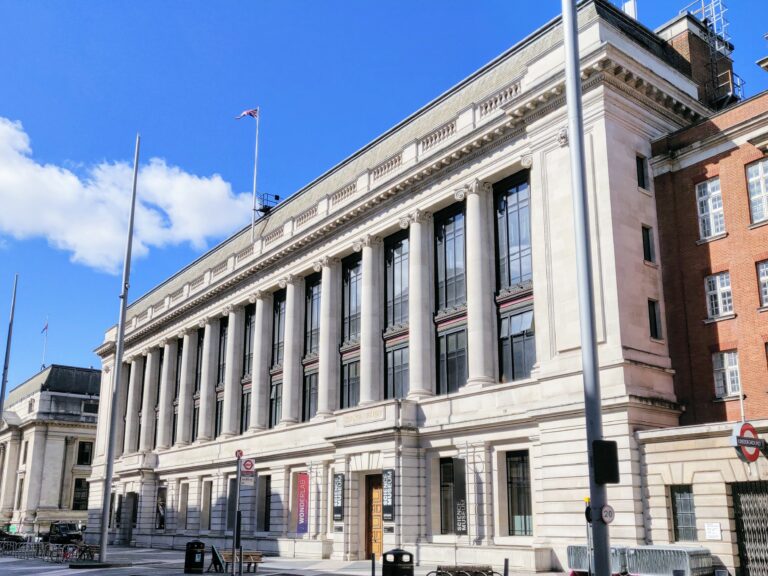The Science Museum UK is one of the most renowned museums dedicated to science, technology, and innovation. Located in South Kensington, London, it attracts millions of visitors every year who come to explore its vast collection of exhibits covering everything from space exploration to medical advancements.
History of the Science Museum UK
The Science Museum was founded in 1857 as part of the South Kensington Museum. It became an independent institution in 1909 and has since grown into a world-leading science and technology museum. Over the years, the museum has expanded its collections, focusing on major scientific breakthroughs, engineering marvels, and interactive learning experiences.
Major Exhibitions and Galleries
The Science Museum is home to numerous permanent and temporary exhibitions that showcase scientific discoveries and technological advancements. Some of the most notable exhibitions include:
1. Exploring Space
One of the museum’s most popular sections, the Exploring Space gallery, takes visitors on a journey through the history of space exploration. Highlights include the Apollo 10 Command Module, satellite models, and spacesuits used by astronauts.
2. Medicine: The Wellcome Galleries
This exhibition offers the world’s largest medical galleries, featuring over 3,000 medical artefacts. It covers topics such as surgical advancements, early medicine, and the development of vaccines.
3. Wonderlab: The Equinor Gallery
Designed for children and families, Wonderlab is an interactive gallery that features hands-on experiments, live demonstrations, and immersive experiences to engage young minds with the wonders of science.
4. Information Age
The Information Age gallery explores how communication and information technology have transformed society. Exhibits include early telegraphs, radios, and the first computers.
5. Flight Gallery
The Flight Gallery showcases the evolution of aviation with historic aircraft, including the first jet engine and early aeroplanes used in World War II.
6. Energy Hall
The Energy Hall features working steam engines and explores the history of Britain’s industrial revolution and the role of energy in technological advancements.
7. Mathematics: The Winton Gallery
This gallery demonstrates the importance of mathematics in various industries, from aviation to finance. It was designed by renowned architect Zaha Hadid and features visually stunning exhibits.
Educational Programmes and Events
The Science Museum is not just a place to observe exhibits but also a hub for learning and innovation. It offers a range of educational programmes, including:
- School visits and workshops designed for different age groups.
- Public lectures and events featuring leading scientists and researchers.
- Online resources and virtual tours for remote learning.
- STEM (Science, Technology, Engineering, and Mathematics) initiatives to inspire young learners.
The museum also hosts temporary exhibitions and special events throughout the year, making every visit a unique experience.
Visitor Information
Location
Address: Science Museum, Exhibition Road, South Kensington, London SW7 2DD, UK
Opening Hours
- Open daily from 10:00 AM to 6:00 PM
- Last entry at 5:15 PM
- Closed on 24th-26th December (Christmas Eve, Christmas Day, and Boxing Day)
Ticket Information
- General admission is free, but donations are welcome.
- Some special exhibitions and events may require a paid ticket.
- Advanced booking is recommended, especially during weekends and school holidays.
How to Get There
The Science Museum is easily accessible via public transport:
- Tube: Nearest stations: South Kensington (Piccadilly, Circle, and District lines)
- Bus: Routes 14, 49, 70, 74, 345, 360, 414, and C1 stop near the museum.
- Train: Victoria and Paddington stations are nearby.
- Car: Parking is limited, so public transport is advised.
Facilities and Amenities
The museum offers various facilities to ensure a comfortable visit:
- Cafés and restaurants serving snacks, meals, and beverages.
- Museum shop selling science-themed gifts, books, and souvenirs.
- Accessibility options, including ramps, lifts, and wheelchair hire.
- Family-friendly facilities, such as baby changing areas and child-friendly exhibits.
Frequently Asked Questions (FAQs)
1. Is the Science Museum suitable for children?
Yes! The Science Museum is perfect for children, with dedicated interactive areas like Wonderlab and engaging hands-on exhibits.
2. Do I need to book tickets in advance?
While general admission is free, booking online in advance is recommended, especially during peak times, to ensure entry.
3. Are there guided tours available?
Yes, the museum offers guided tours and audio guides, providing in-depth insights into key exhibits.
4. Can I take photographs inside the museum?
Yes, photography is allowed in most areas for personal use, but flash photography and tripods may be restricted in some exhibits.
5. How long does it take to explore the museum?
A full visit can take 3-5 hours, but with so much to see, some visitors spend the entire day exploring.
6. Is there parking available at the Science Museum?
There is no dedicated parking at the museum, so using public transport is recommended.
7. Can I bring my own food to the museum?
Yes, visitors can bring their own food, and there are designated areas for eating packed lunches.
Conclusion
The Science Museum UK is a must-visit destination for science enthusiasts, families, and students. As one of the free museums in London, it provides an accessible and educational experience for all visitors. With its engaging exhibitions, hands-on activities, and educational programmes, the museum offers a unique and inspiring experience. Whether you’re fascinated by space travel, medical history, or the evolution of technology, the Science Museum has something for everyone. Plan your visit today and explore the world of science in an interactive and exciting way!
